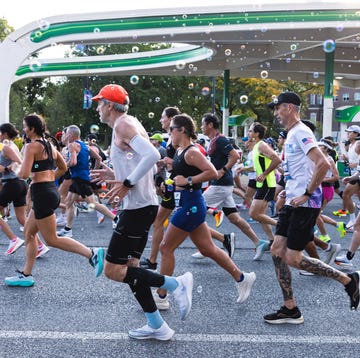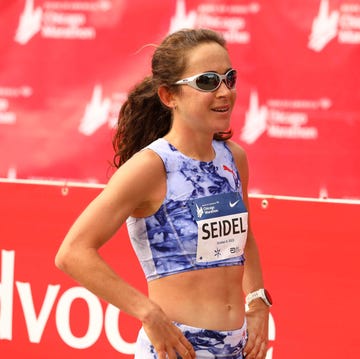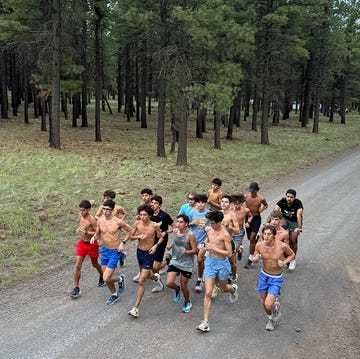If you’re wondering why buying the latest pair of racing shoes can feel like trying to score Taylor Swift tickets, you’re not alone. For decades, buying running shoes followed a predictable pattern: when your current pair wore out, you’d visit your local run running store or favorite website and select your tried-and-true model, perhaps in a new color.
Not anymore.
Last October, the Adidas Adizero EVO SL, an uptempo trainer, sold out online within hours and in stores the same day. If you didn’t know the release date, you missed out. Months later, the model is still hard to find.
Welcome to the world of “drops.”
The new normal
A “drop” is when a brand releases a product at a specific time and date, often in limited quantities—like a movie premiere, but for shoes. The brand announces the release date weeks in advance, builds anticipation through social media campaigns and influencer marketing, and then makes the product available all at once. Under the traditional running shoe release cycle, new models quietly appear on shelves and remain available for months (with little fanfare). But in this new normal, if you miss the release window, you might be out of luck until the next release—if there is one.
The strategy traces back to streetwear brand phenomenon Supreme, which transformed from an underground skateboard shop into a $2.1 billion company by releasing limited products in calculated weekly drops starting around 1999. They proved scarcity could turn routine shopping into must-attend events.
Nike spent the last two decades perfecting this playbook, turning limited releases into global phenomena that routinely draw overnight crowds and crash websites. It’s not just Nike anymore. In 2024, there were over 20 limited drops from Adidas, Hoka, New Balance, On, and Saucony featuring elaborate marketing campaigns and controlled availability.
Hype-driven marketing
New Balance, riding the wave of its successful streetwear sneaker collaborations with rapper Action Bronson, brought that same energy to performance running. A day before the New York City Marathon in 2024, the company unveiled Bronson’s special edition FuelCell Rebel v4 and Trail Minimus shoes. Saucony partnered with Minted NY, a menswear brand started by influencer (and runner) Marcus Milione, on a punchy blue Endorphin Speed that created a line around the block and sold out instantly online. The Satisfy Running x Hoka Mafate Speed 4 Lite launch was so popular that the Hoka website malfunctioned. Even Adidas was caught off guard by its own success: CEO Bjørn Gulden told investors that all 200 pairs of their new $500 Adizero Adios Pro Evo 1 sold out in an hour at the Beijing Marathon.
These releases were well-coordinated “viral moments,” as Gulden has called them. Public relations teams ensure fashion and lifestyle publications know about upcoming drops, and collaborator names make for attention-grabbing headlines.
Mass media has taken notice. Streetwear publications Complex and Highsnobiety covered nearly every new racing model and collab. “Sneakerhead” sites, known for covering Kanye West’s Yeezy line and limited-edition Jordans, published where-to-buy guides for the upcoming Vaporfly 4. GQ published over 100 articles on running in 2024—double their coverage from the previous year.
When running meets resale
The emergence of running shoe hype has created an uncomfortable parallel economy. Because of limited supply, some running shoes are now targets of online resellers, just like concert tickets. The Satisfy Running x Hoka collaboration shoe commands prices up to $100 over retail on secondary markets, while the Pharrell Williams edition of the Adidas Pro Evo 1—originally $500—now fetches upwards of $1,400.
Local running stores find themselves in unfamiliar territory. Their online stores have become a battleground for automated purchasing bots, tools typically used to snatch up rare sneakers and streetwear. “We bought bot protection and had to manually cancel hundreds of bot orders,” says Dan Fitzgerald, co-founder of Boston-based Heartbreak Hill Running Company.
In addition, stores now reserve a portion of their stock for their local communities—a practice borrowed directly from the streetwear playbook. Retailers like Bodega and Concepts have managed limited releases for years, sometimes requiring security personnel on drop days. “We’ve had to learn the sneaker hype game a little bit,” added Fitzgerald.
Keeping it real
The lifestyle sneaker world has already shown us where this path leads. After years of endless drops and collaborations, consumer fatigue set in—another fashion brand collaboration or limited colorway hardly raises eyebrows anymore. Running brands would do well to heed this cautionary tale.
Local stores might offer the cure to hype-driven releases. While global collaborations grab headlines, retailers like Heartbreak Hill and Distance Store (a run specialty store in Europe) are finding ways to make these moments community-focused. Heartbreak and local run crew Brick Layers Union turned a Nike Pegasus Plus promo event into an impromptu local race, letting runners test the shoe and enter raffles for free pairs. Distance Store’s collaboration with On featured store specific branding, so resonated most deeply with their existing community—people who had actually shopped there and attended run clubs.
Even the Minted NY x Saucony popup, which drew lines down the block, maintained its community feel: founders (and brothers) Marcus and Shawn Milione chatted with customers while their parents worked checkout and managed inventory. Despite the hype, everyone who lined up was able to get a pair. “It’s a rare opportunity to meet so many members of the community in one place,” Marcus said.
These success stories point to a better path forward. They show how running culture can selectively adopt elements of the excitement-driven streetwear strategy without sacrificing authenticity. The real question isn’t whether the running industry will continue to borrow from streetwear’s playbook—that’s already happening. The question is whether the industry can avoid some of streetwear’s pitfalls and maintain the core of what’s important in running: the ability to build genuine communities around shared passion rather than pure consumption.

Cole Townsend, a co-founder of the sneaker website Sole Retriever, brings an insider’s understanding of performance footwear and the growing influence of menswear and streetwear on running culture. When he’s not logging miles along the Charles River in Boston, Cole can be found moderating discussions about running’s evolving aesthetic on Reddit or blogging about it on Running Supply.













